.410 for Turkey? Yes! Leave a reply
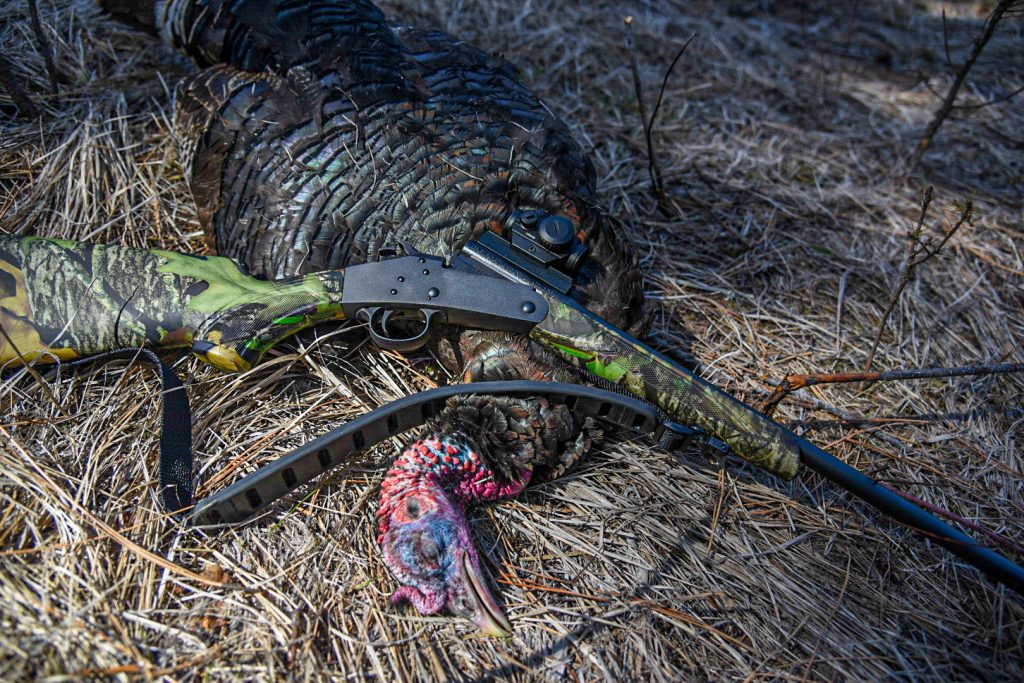
.410 for Turkey? Yes!
By Jason Brooks
It seems that each year a new caliber of rifle comes out for the big game hunter. Either a far and flat shooting magnum or a light-recoil tack driver. But for bird hunters there hasn’t been a change in shotgun gauges in probably a hundred years. However, when you combine “big game” birds like turkey’s and a shotgun load you will soon find several “new” and “improved” shotgun rounds. Most new turkey hunters think you need a big bore throwing hundreds of pellets at lightning fast speeds to kill the birds. Once you call in a bird or two you start to realize that those heavy high brass loads really help with long beards but it only takes a few pellets in the head and neck to get the job done.
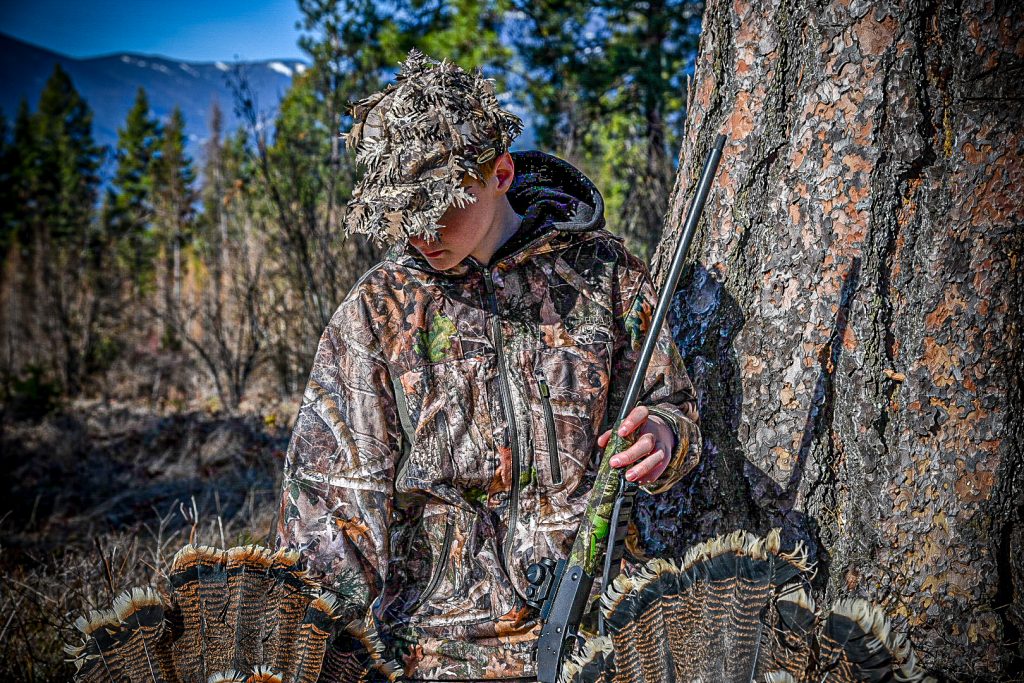
The .410 can and does kill turkeys effectively and saves your shoulder a bit too. New this year, Stevens Firearms, a subsidiary of Savage Arms, came out with a break-open single shot .410 just for turkey hunting. The stock and forearm is camo and the action and 26-inch barrel is black. A super tight turkey choke is also included.
I was able to have one of these new shotguns available just in time for the Idaho youth turkey season. My 14-year-old son, who had already taken a few birds over the years in Washington, was more than willing to give the .410 a try. He had broken his collar bone six weeks earlier while mountain biking and was still healing so the light shotgun with milder recoil would be good for his shoulder.
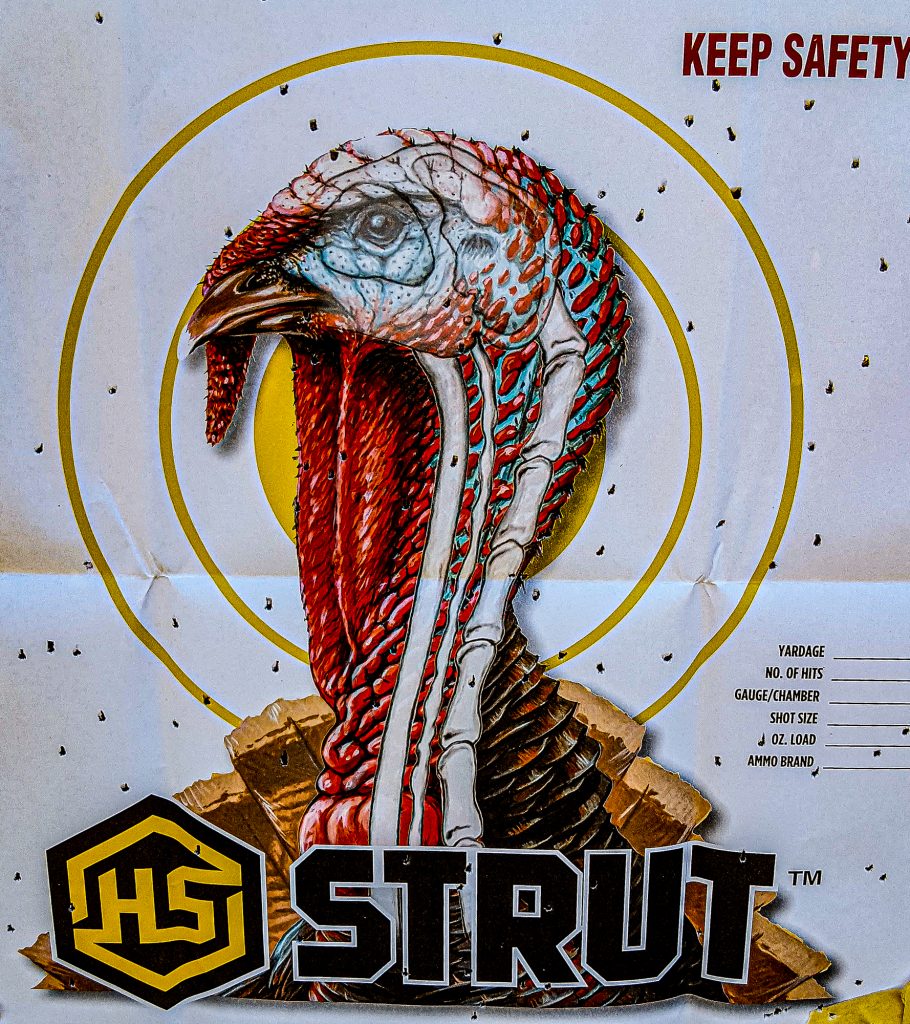
The first thing the hunter needs to realize is that the .410 holds less than one ounce of shot, even the 3” high brass shells. This means you do need to get close and be sure to pattern the shotgun so you know your limits. We patterned three different loads, all were high brass and two were lead shot with the third being the Browning TSS (tungsten) loads. The first load was a high brass #6 lead shot and it did well at twenty yards but soon dispersed too quickly at 30 yards and beyond. Then we tried #7.5 in Federal high brass and it shot well all the way out to 40 yards. Last was the Browning TSS loads which were #9 shot made of tungsten. Yes, #9 shot but before you discount the small pellets studies have shown that due to the extreme weight of tungsten that they carry as much energy (hit as hard as) #6 shot. It patterned very well out to 40 yards and we decided to use those shells but had some of the #7.5’s along just in case. The TSS loads are sold in boxes of 5 and cost nearly $30 so we only had two boxes for the trip to Idaho.
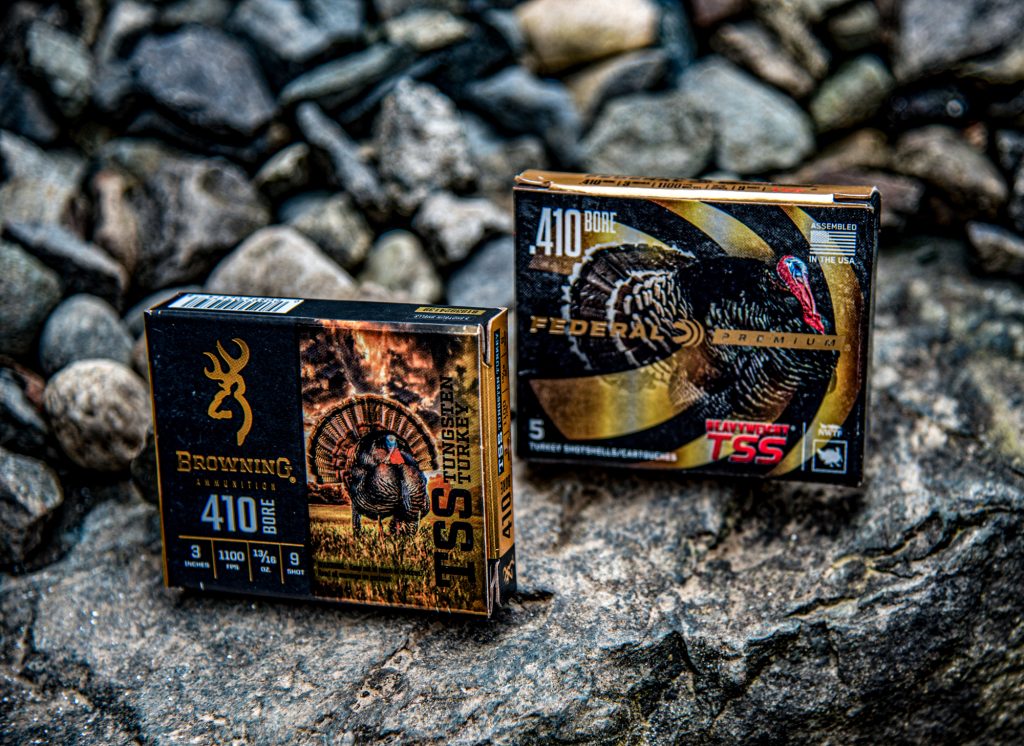
A little about shot size, loads and energy. In one ounce of #6 lead shot there is approximately 225 pellets and one ounce of #9 lead has about 585 pellets. Tungsten is heavier than lead so there are less pellets per ounce (about 348 pellets) but since tungsten is 1.74 times the weight of lead it simply carries energy better and hits almost twice as hard. This is a simple explanation but it helps understand why a .410 TSS load of #9 shot that is 11/13 of an ounce-which has 294 pellets-is actually a better load for turkey than a shogun shooting one ounce of #6 shot if they are both shooting the pellets at the same speed. Most turkey specialized loads, known as TSS loads, are high brass and the Browning TSS loads are shooting at 1100 fps (feet per second).
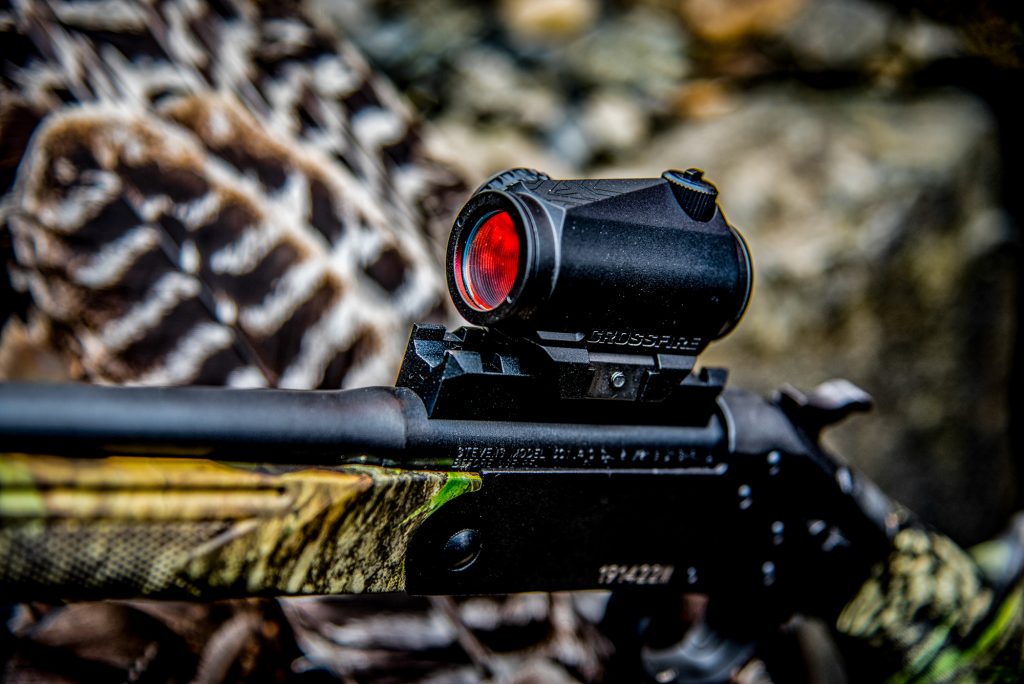
To maximize this combo of .410 shotgun and TSS shells we opted to top the firearm with a Vortex Crossfire Red Dot scope. This allowed us to not only pattern the shotgun precisely but also allowed for the aiming of the TSS loads, which carry farther than lead, to our maximum shooting distance. When it comes to hunting turkeys you aim for the head and when a turkey is thirty yards away or more the little bead at the end of the shotgun can cover more than the head. The first thing we noticed while patterning the shotgun while using the Red Dot sight was that the dot was much higher than the bead. This is because of the proprietary wad used for TSS loads along with the tungsten that flies faster and flatter than lead. Sighting the shotgun in for forty yards we knew the maximum range was around fifty yards.
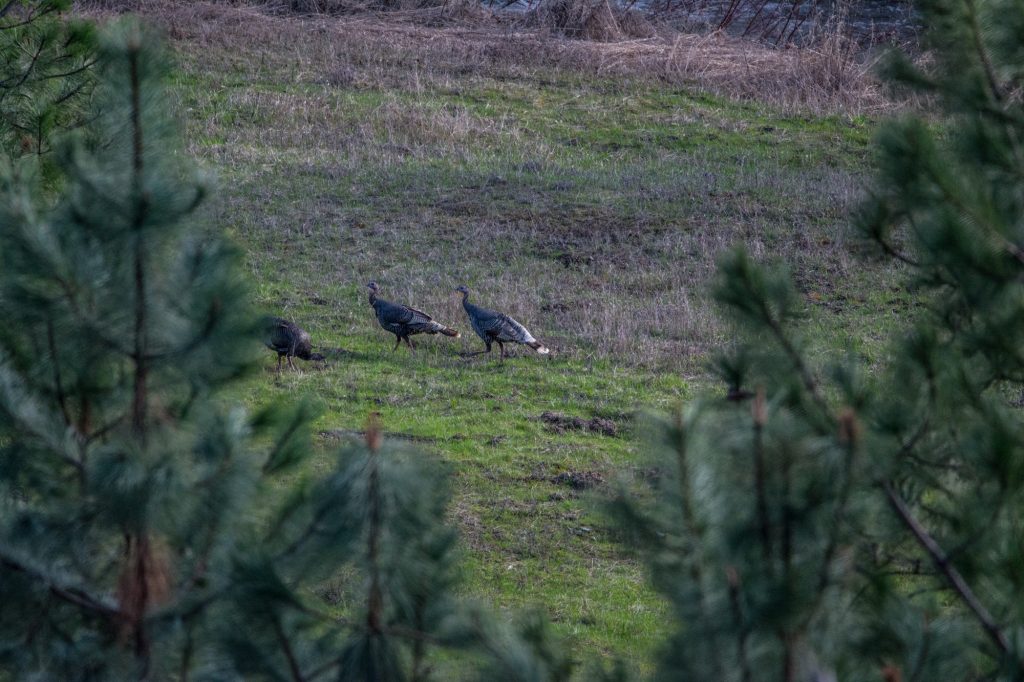
It was now time to put the combo to the real test. We found ourselves in Idaho’s backcountry. Away from the nearest town, with a wall tent to call home for four days of hunting. This was the youth season so we knew that there would be less pressure afield and we also planned on using this time to scout for a whitetail deer later this fall. The one thing I didn’t take into account was that we chose to hunt close to the Montana border and the Mountain Time Zone. We awoke to gobbling Toms all around us already heading out of the roost when my alarm went off. Luckily we camped in National Forest and were surrounded by our hunting grounds.
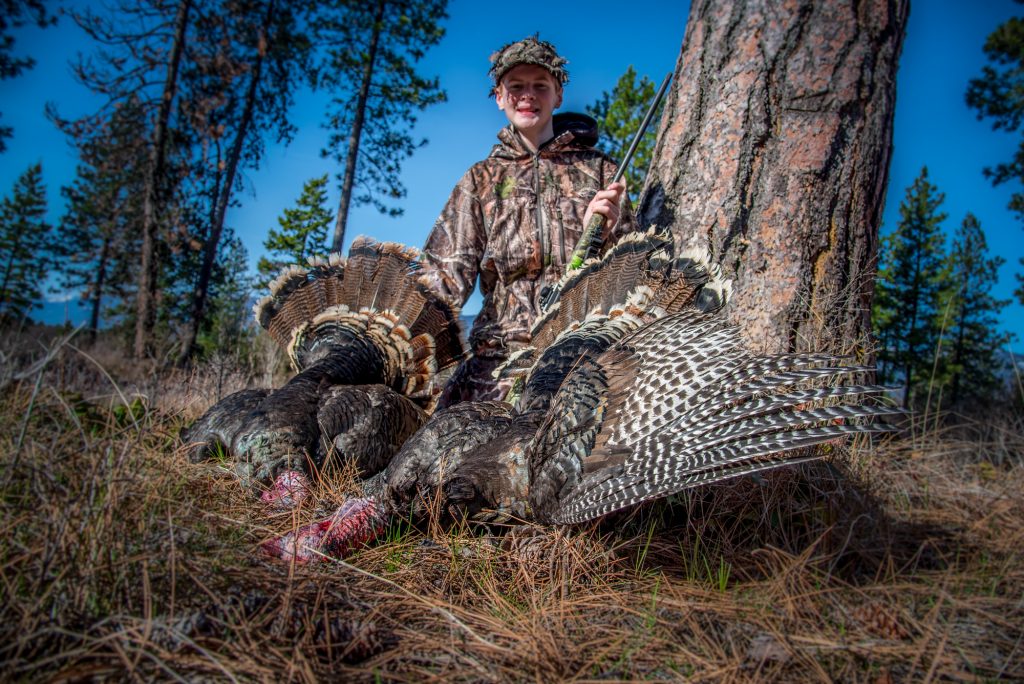
After a morning of chasing birds, catching up to a group of hens, and unable to pull one of those gobblers into our set-up it was time to do some hiking. As we neared a small clearing my son discovered a group of Jakes. The unit we were in allowed two bearded turkeys in the spring and up to six turkeys per year with either sex in the fall. The farmers hated the turkeys and wanted them gone. Not being too picky my son decided to do a “spot and stalk” on the group of Jakes. Sneaking along the timber he closed the distance to forty yards and the .410 did the job so effectively with such low noise that when the Jake fell and flopped the other Jakes jumped on him and spurred him. Ryan had to wait until the Jakes stopped their bullying and separate so he didn’t hit more than one. At forty-five yards he dropped another turkey.
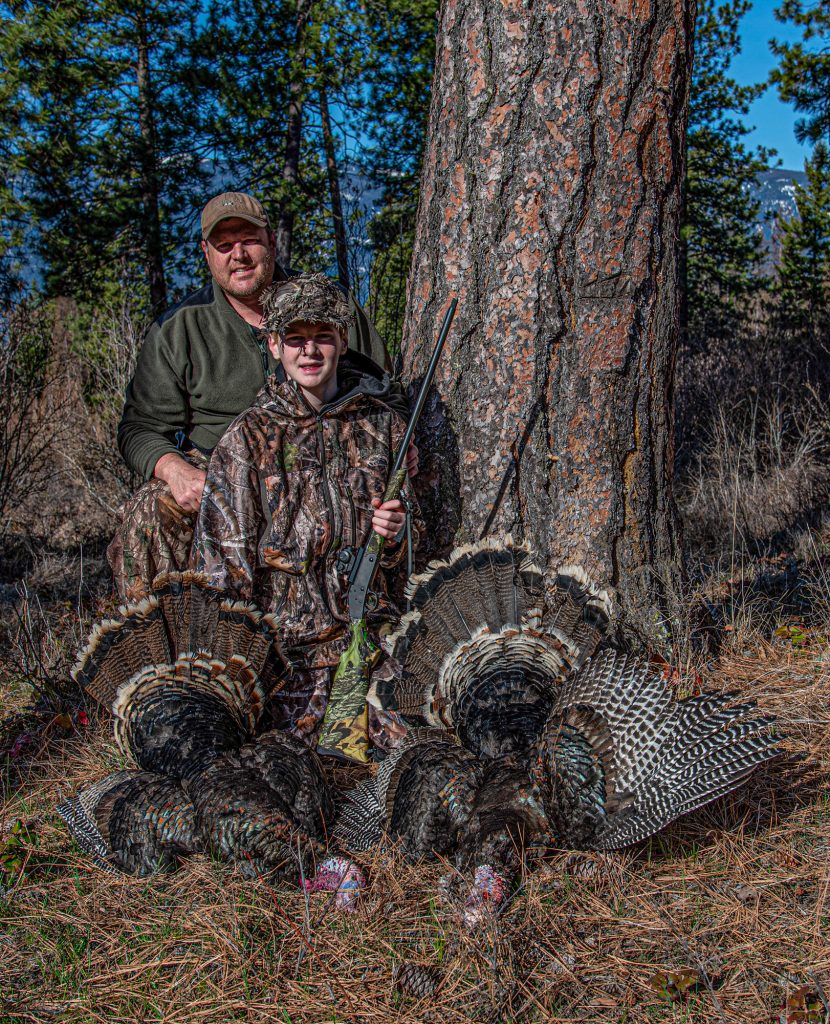
The .410 Stevens topped with a Vortex Crossfire Red Dot and shooting the Browning TSS loads proved to be very effective for turkeys. Not only is this five-pound shotgun which comes with sling swivels easy to carry afield but it gets the job done. Turkey hunting is a close encounters hunt and this is what makes it so much fun. The light recoil also makes this a great youth gun or one to carry if you plan on hiking all day in search of birds away from farms, fields, and other hunters. So the next time you hear someone ask if the .410 makes a good turkey gun the answer is: “Yes”!
Jason Brooks- The Outdoor Line Field Editor

